How Russia’s summer offensive is failing – and what that means for Ukraine
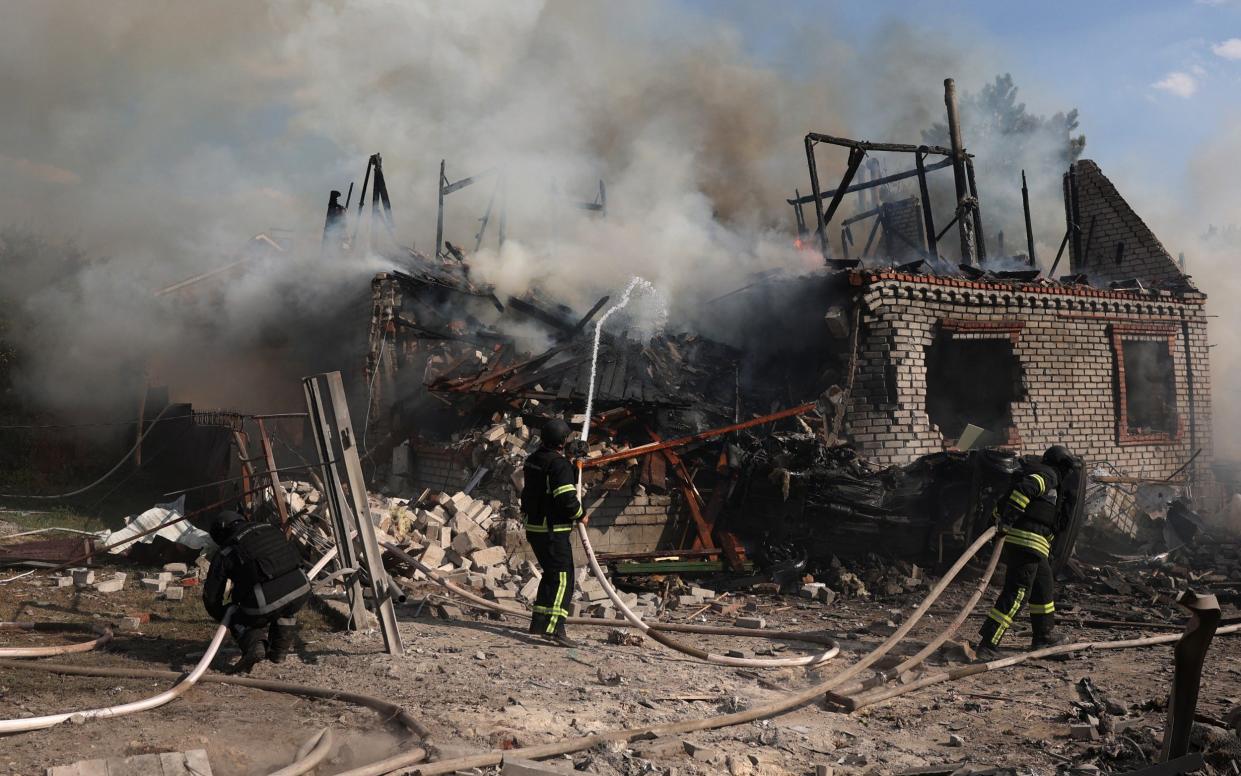
It could have been a war-winning blow.
With Ukraine short of men, ammunition, and trenches, Russia this spring launched its biggest offensive operation since the full-scale invasion began in 2022.
But with around two months of the summer left, it has failed to achieve its most ambitious goals: there has been neither a grand Russian breakthrough nor a general collapse of the Ukrainian front line.
The gains the Russian military made have come painfully slowly and at immense cost: the British Ministry of Defence said last week that Russia had suffered casualties of 1,262 and 1,162 per day in May and June respectively – the highest of the conflict.
Yet Russian forces continue to advance, sometimes at an alarming pace.
On Wednesday the Ukrainian journalist Yuri Butosov sounded the alarm about a “critical situation” near Pokrovsk, where he said the Russians had managed to take four miles in one week.
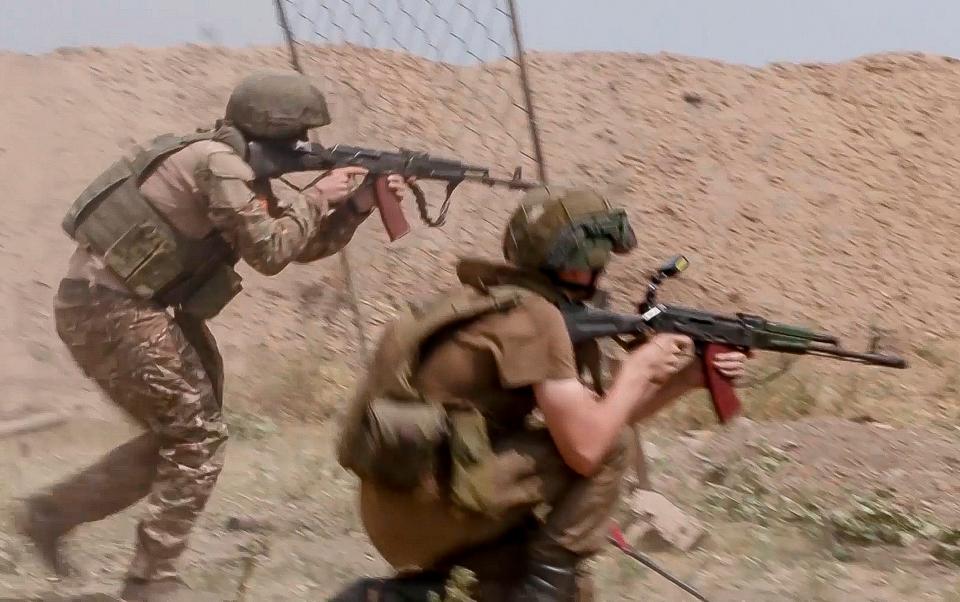
“The city of Myrnohrad is 14 km [9 miles] away. A total of 14,” he wrote. “If the enemy is allowed to enter Myrnohrad, they get a zone of concentration and accumulation, and will be able to attack Pokrovsk itself.
“The Pokrovsk-Myrnohrad agglomeration is the last area of defence before the Dnipropetrovsk region.”
Deep State, a Ukrainian war blog, reported that a “chaotic withdrawal of one of the infantry brigades” in the same area had led to the near-encirclement of the 31st separate mechanised brigade near the village of Prohres.
“The worst case scenario has probably been averted, but it’s still on a negative trajectory,” said Michael Koffman, a senior fellow at the Carnegie Endowment, who recently returned from a research trip to the front lines. “Ukraine is going to be losing more territory over the coming months.”
The battle
At the start of this campaign, there were some dizzy predictions of a Russian blitzkrieg running all the way to Kyiv. That is now off the table.
But Russia still has one overriding territorial objective: the capture (“liberation”, as the Kremlin calls it) of all or most of Donetsk region.
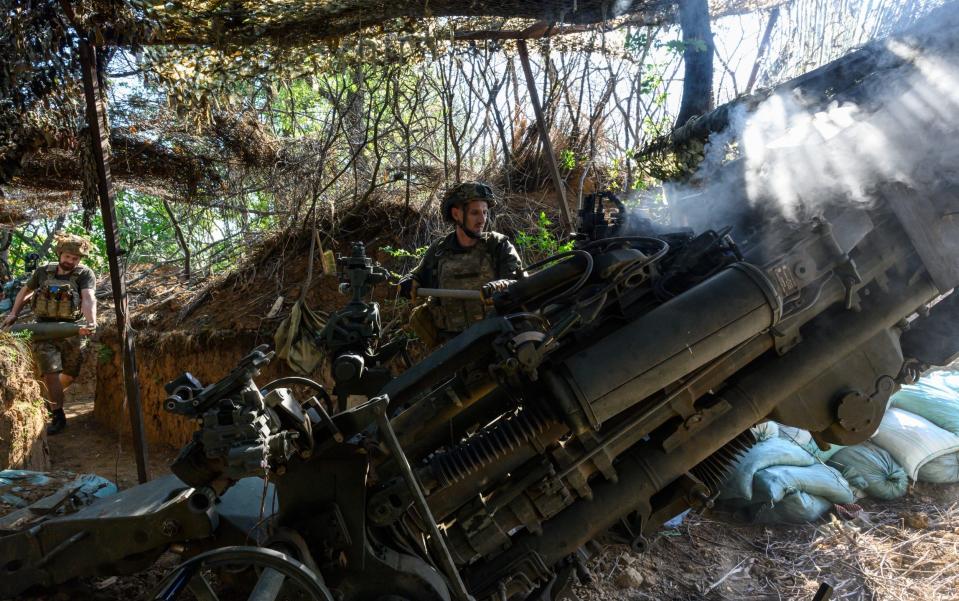
We know that because it is one of Vladimir Putin’s stated war aims, and because everything Russia has done on the battlefield so far is clearly directed at that goal.
Factors of timing, opportunity, and political considerations play into that goal.
If and when peace talks begin – and the Russians clearly hope a Donald Trump victory in November will put them in a good position to start them – they will seek to hang on to whatever they occupy when the guns fall silent.
If by that time they hold the remaining Donbas cities by that time – Sloviansk, Kramatorsk, Pokrovsk – they could sell such an outcome as a victory at home.
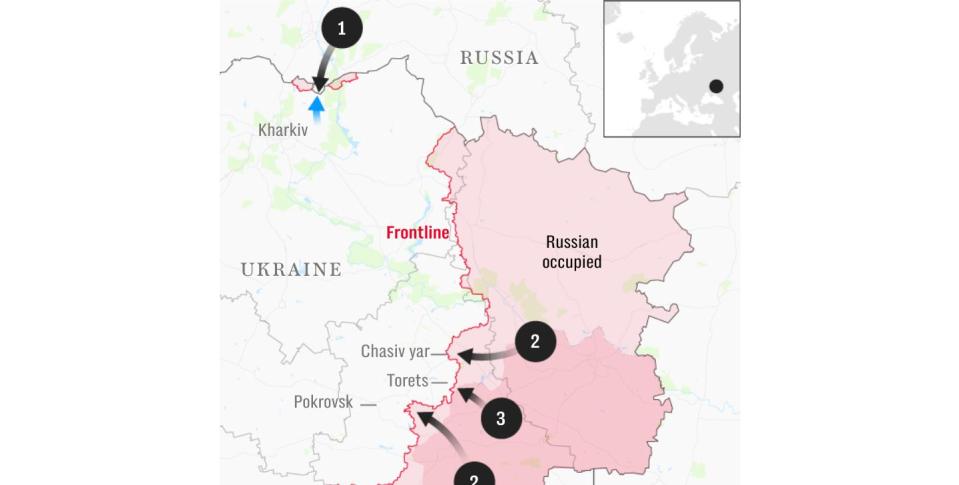
It is also apparent that Russia currently has an advantage in men, equipment, and ammunition that may erode by the end of the year. They need to use this window of dominance while they can.
The plan
The plan the Russians went with has all the hallmarks of Gen Valery Gerasimov – multiple efforts up and down the front (critics say Gerasimov’s other calling cards are massive losses, pointless dispersal of effort, and a lack of urgency that prevents him from exploiting opportunities staring him in the face – although that may be unfair, as we shall see).
The main prongs included: an offensive across the border from Belgorod region to the northeast of Kharkiv to draw Ukrainian reserves from Donbas; a thrust towards the Oskil river south of Kupiansk to threaten Kharkiv from another direction; and two main attacks further south, from Bakhmut towards the hill-top town of Chasiv Yar, and from Avdiivka towards city of Pokrovsk.
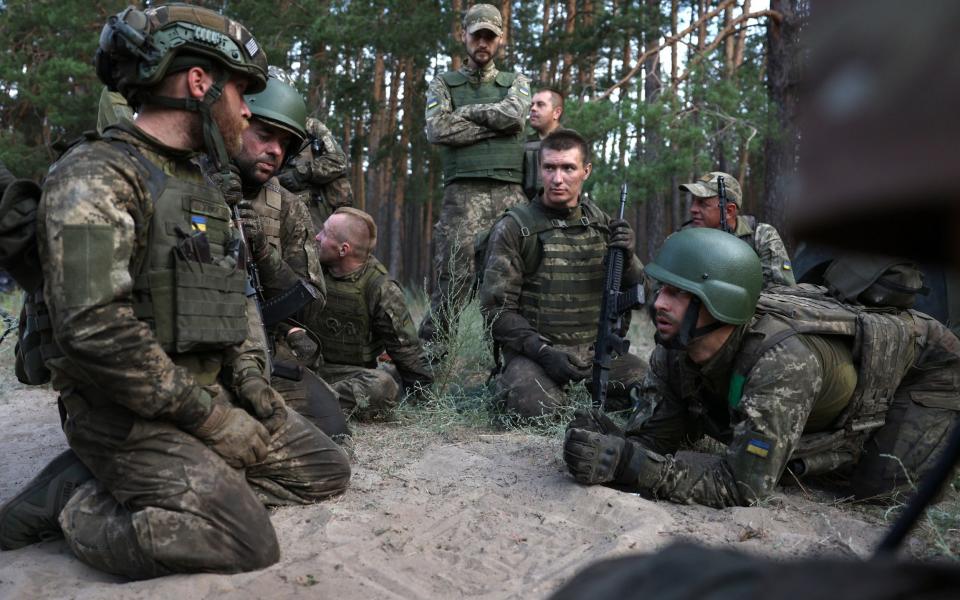
Over the past month or so, a subsidiary attack has developed on Niu-York and Toretsk, between the battles for Chasiv Yar and Pokrovsk.
There have also been assaults further south aimed at threatening Kurakhove, which anchors the Ukrainian position there.
Kharkiv
The May 10 assault on Kharkiv was the first direct cross-border offensive at scale since 2022, and had two objectives: to establish a buffer zone to prevent Ukrainian strikes and raids into Belgorod region, and to divert Ukrainian reserves from the main front in Donbas.
The first has clearly failed. Despite initial success, the Russians quickly ran out of steam and began losing ground.
They’re now boxed into two separate lodgements around the town of Vovchansk and the hamlet of Lukyanske, which extend only a few miles into Ukrainian territory.
The second objective was more successful. Ukraine was forced to divert several brigades and battalions from elsewhere on the front line to contain the threat.
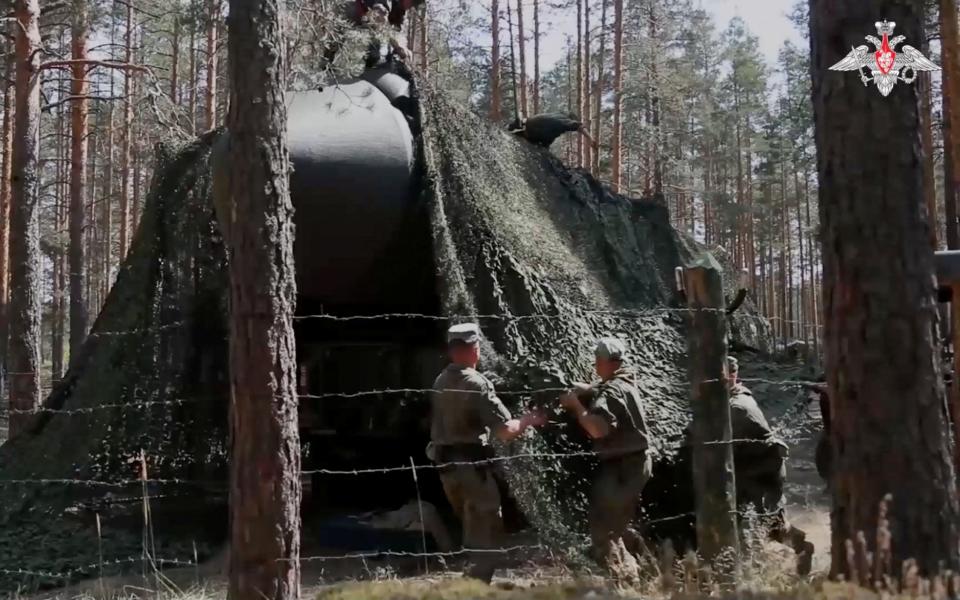
The shortage of mobile reserves is telling: the recent Russian gains towards Niu-York, Toretsk, and Pokrovsk are all characterised by a lack of Ukrainian replacements to reinforce the line.
Donbas
The strangest – and most Gerasimov-ish – thing was the failure of the Russians to exploit that success.
“It’s now clear that the Russians launched the Kharkiv offensive about a month before it was planned,” said Mr Koffman.
The idea of the early start was to take the Ukrainians by surprise. It did – but it also took the Russians by surprise. The 4th army corps, assigned to the operation, had not yet finished training and there was a lag of about a month before assaults really got going in Donbas.
In fact, as the Kharkiv operation began to falter, the Russian high command ended up peeling troops out of Donbas to send north, said Mr Koffman.
It’s a delay that may have saved the Ukrainians from collapse.
Pokrovsk and Chasiv Yar
The battles in Donbas have never really stopped since winter.
But since 10 May – the day the attack in Kharkiv began – the Russians have advanced at most four miles towards Pokrovsk, roughly the same towards Prohres and 3.37 miles to Niu-York.
They made just two miles in their offensive on Chasiv Yar before stalling along the canal on the eastern side of the town.
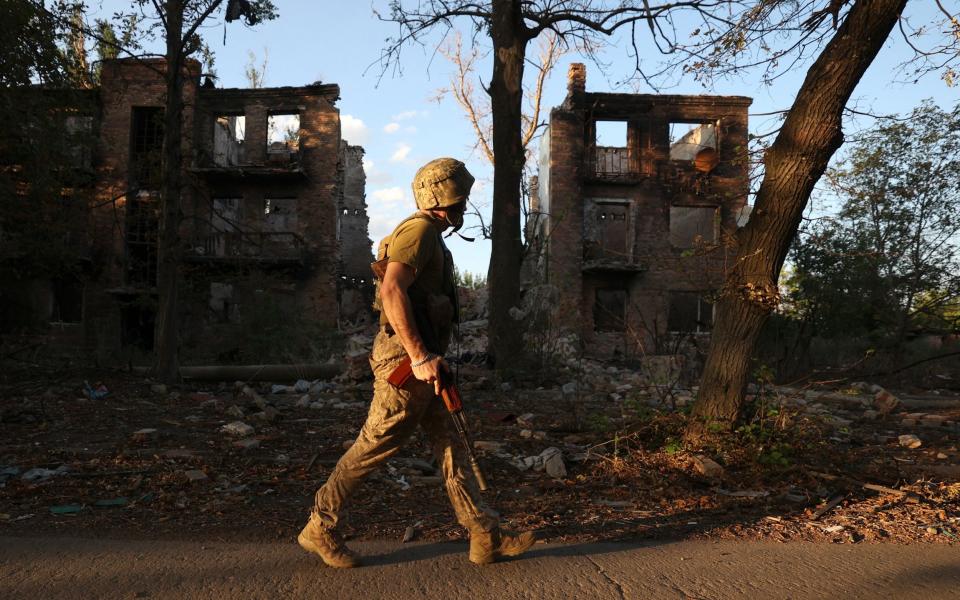
“The situation is this: the Russians have selected a brutal tactic, very similar to the one they used in Bakhmut: they are sending a lot of people, losing a lot of people, at the same time gaining a few metres and a couple of streets in some villages and so on,” said Andriy Zagorodnyuk, a former Ukrainian defence minister who runs the Centre for Defence Strategies, a Kyiv-based think tank that tracks daily battlefield developments.
“Essentially it is extremely slow movement, but there is movement,” he added. “We are working on that – I cannot tell you exactly what is going to happen, but we are trying to get some capabilities to prevent that in the long run.
“But in the short run, since we only have the opportunity to hit in the immediate proximity of the Russian forces that is what they are doing.”
But over time, those advances add up.
It may not have moved far, but the tip of the salient pointing at Pokrovsk is now just two and a half miles from the critical highway linking that town with Kostiantynivka and the strategic towns of Kramatorsk, Druzhkivka, Sloviansk.
It is already under fire and effectively abandoned as a supply route.
If the Russians can capture Niu-York and Toretsk, they will threaten Chasiv Yar from the South and Kostiantynivka from the south-east.
That will put them a step away from threatening Kramatorsk and Sloviansk, and jeopardising the entire Ukrainian position in Donetsk region.
Tactics
One reason for recent Russian success is a preference for concentrating attacks on weaker Ukrainian units.
The assault on Torestk and Niu-York, which began about a month ago, coincided with a Ukrainian decision to swap the relatively strong brigade holding the area with a weakened unit that was then in Chasiv Yar, said Rob Lee, a senior fellow at the Foreign Policy Research Institute, a US think tank.
The attacks to the east of Pokrovsk reported by Mr Butusov and Deep State may also reflect such opportunism.
This stage of the war has also been characterised by slow movement and very small infantry actions.
Russian attacks now often involve as few as six or eight men trying to sneak across no-man’s-land and gain a trench foothold.
That is a result of a problem both sides in the war face: crossing no-man’s land with a traditional armoured assault – as the Russians tried at Vulhedar and Avdiivka, and the Ukrainians attempted in Zaporizhzhia last summer – simply results in a lot of disabled armour.
The Russians have come up with two solutions to the problem this year. One is the “turtle tank”, a lumbering, up-armoured beast that resembles a moving barn and is designed to absorb massive amounts of fire as it clears a route across no-man’s land.
The other dispenses with armour altogether: putting soldiers on motorcycles to ride as fast as possible at the enemy in the hope of not being hit. When – or if – they reach enemy lines they ditch the bikes and fight in the trenches as infantry assault teams.
These are imperfect, jerry-rigged adaptations to the battlefield conditions, not wonder-weapons.
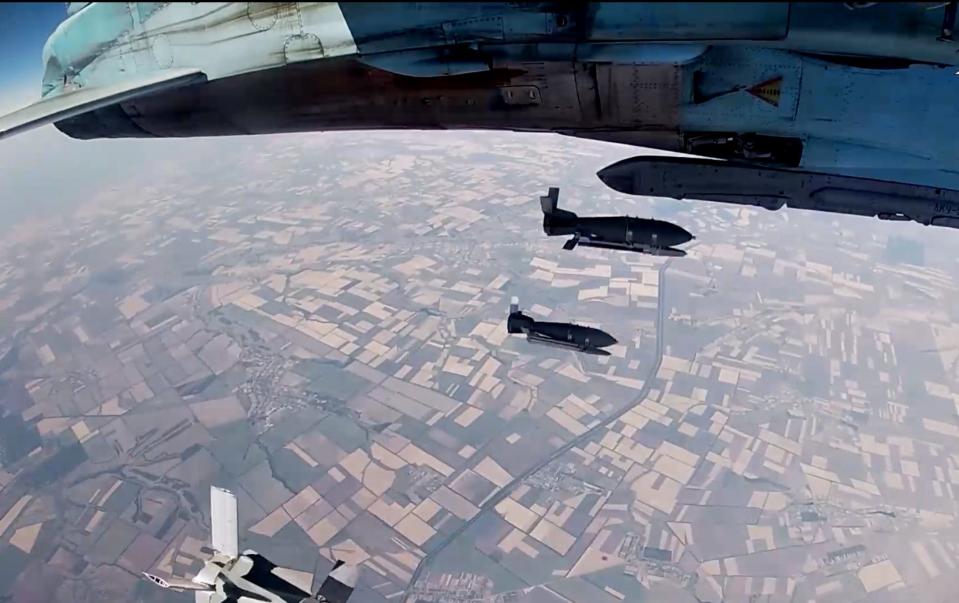
“One unit I spoke to said the Russians will attempt an armoured attack, and when that fails they try motorcycles and all terrain vehicles. And then when they’re resupplied with armour, they try another armoured assault,” said Mr Lee.
“The bottom line is that there are no good options for attacking a heavily fortified position.”
But these improvised techniques can still deliver gains, especially when backed by glide bombs, which Russia has begun to use intensively on the frontline.
“The glide bombs have become more accurate, not less,” said Mr Koffman. “They’re very powerful psychologically: they take out whole positions and with a single strike can destroy a building it would have taken weeks for artillery to reduce in the battle for Bakhmut.”
Balance of power
The most pessimistic predictions about this summer were based on critical Ukrainian shortages of men, shells, and prepared defensive positions.
Each of those problems has begun – albeit belatedly – to be addressed.
Volodymyr Zelensky, Ukraine’s president, signed a bill overhauling conscription rules in April.
The numbers drafted are secret, but sources familiar with the matter said it had raised several times more troops in a month than previously. They will begin to reach the front in large numbers in the coming months.
Also in April, the United States Congress approved a much-delayed military aid package, shortly before the attack on Kharkiv.
The arrival of that kit has already reduced, but not eliminated, Russia’s superiority in ammunition. F-16 fighters are expected to appear this summer.
This all means Russia’s battlefield dominance is likely to be eroded by winter.
And Moscow has its own headaches. Russia is not running out of armoured vehicles, but it’s stocks are dwindling.
It has also recently increased the salary offer for military volunteers, suggesting it may be facing recruitment problems. It may have to reduce the tempo of its operations at some point.
What next?
The dangers of the next few months remain acute.
Alexander Syrsky, the Ukrainian commander-in-chief, acknowledged this week that the Russians enjoy an advantage in equipment of “1:2 or 1:3 in their favour”.
Mr Butusov, the Ukrainian journalist, complained that the crisis on the Pokrovsk front is partly because defences have not been built and there is no unified command in the area.
And many of Ukraine’s reserves are still pinned down near Kharkiv.
In short, Russian advances are likely to continue at least until September.
But the battle of Donbas, bloody as it is, may not be the deciding factor in the war.
“Increasingly it’s clear whoever controls the next 20km [12 miles] of Donetsk is not going to change the strategic picture in this war,” said Mr Koffman.
“The attrition that matters is not attrition of military resources at the front, but attrition and damage inflicted by both sides on one another’s ability to wage war and damage each other.”


